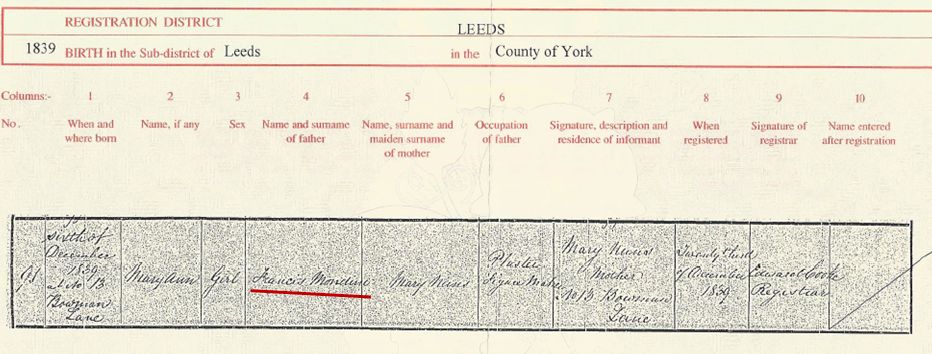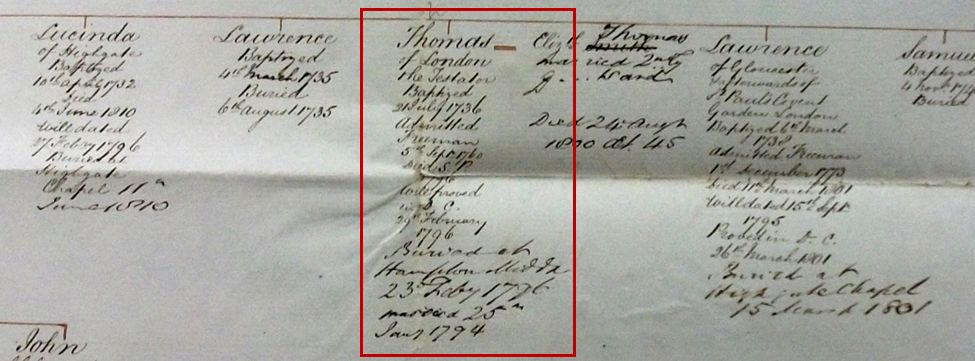Barking Up the Wrong (Family) Tree – debunking family myths and pruning online family trees
 14
14Jun
The family myth: killed by a cow?
A couple of weeks ago a cousin emailed me with the discovery that her doctor was related to us. What a small world, especially since her doctor is from New York, and most of the family is located in Utah! However, she was somewhat taken aback when she asked how that branch of the family ended up in New York. Apparently, the doctor’s grandfather, who was 18 at the time, was asked by his mother to help with some chores. When he didn’t get around to it, his mother went out to do them herself, was struck by a cow, and killed. Feeling distraught and responsible, he left home and eventually ended up in New York. Such a tragic story! I was intrigued, so I looked up her death certificate. It turns out that she died of breast cancer. What?!? Whether this young man genuinely believed he was the cause of his mother’s death, or whether the story was altered over time, is unclear, but the family myth was definitely not the reality. Unfortunately, these myths get passed down and find their way into the family record, sometimes even altering the course of a family’s ancestry to the point that they find themselves barking up the wrong (family) tree.
Who was the father of Mary Ann Nuns?
For decades the family record stated that Mary Ann Nuns was born 6 December 1839, at Leeds, Yorkshire, the daughter of Mary Nuns and Francis Modena. According to a life sketch written by Mary Ann’s daughter, Francis was apparently lost at sea on one of his many voyages, and was never able to marry the mother. No birth record (civil or church) was found for Mary Ann, either with the surname “Nuns” or “Modena”. Additionally, no trace of Francis Modena was found anywhere in England, and it seemed that he may have been conjured up out of thin air. Fortunately, research into other family members provided the crucial clue that identifed Mary Ann’s father. The 1838 marriage record of a Sarah Nuns listed two witnesses; Mary Nuns and Francesco Mondini. Since it was customary for siblings to sign as a witness, it was clear that Sarah’s sister, Mary, was one of the witnesses, but who was Francesco Mondini? Was it possible that a little hat-maker in Leeds really knew two Italian men with the same initials?

Clearly Francesco was a close associate of the family, and the similarity of his name to Francis Modena suggested the possibility that he may have been the elusive father of Mary Ann. The birth certificate for Mary Ann was finally located under the surname of her father, Mondini. The 1841 census shows that Mary and Mary Ann Nuns lived on Bowman Lane, and Francesco lived on York Street, in a boarding house across the river. Clearly the couple were not married, or even living in the same household. Not surprisingly, it was discovered that Francesco was not a sea-going man after all, but rather a sculptor who made his way across England and eventually to Ireland, where he died in 1846. The family myth that the two never married was true, but the name of the father was altered over time.

Takeaway: No man is an island; we all live in families and communities. Interactions between family members will often leave clues that can solve decades-long riddles.
Were the parents of Susannah Edwards of Woodstock, Oxfordshire, really from Wales?
Although the client’s records and most online trees stated that Thomas Edwards, the father of Susannah Edwards, was born in 1784 in Wales, several facts suggest that this assumption was incorrect. The Wales birthplace indicates that Thomas and Mary had a child in Woodstock, returned to Wales (over 150 miles away) to marry a year later, once again removed to Woodstock to have the rest of their children, then finally returned to Wales prior to 1841, where they were found on both the 1841 and 1851 censuses as shopkeepers - a head-spinning number of moves! One of the strongest pieces of evidence suggesting the couple in Wales was not ancestral was the 1839 marriage record of Susannah Edwards to William Beesley, in which she stated that her father was deceased, and that he had been a farrier. A man deceased prior to 1839 could not appear on the 1841 census, much less in a completely different occupation. Additional research established that her parents were both from the small village of Shenington in Oxfordshire, and research continued with the correct parents.

Takeaway: If it seems illogical, it probably is. Too often well-intentioned family historians choose the option or piece which best fits their puzzle; however, the reality is that sometimes the correct option has yet to be discovered.
Was Thomas Crump of Bristol really the son of Laurence Crump of Gloucester?
The majority of online trees identified Laurence Crump of Gloucester as the father of Thomas Crump, who married Susannah Frapwell in Bristol, Gloucestershire. Information on Laurence Crump’s family suggested that they had the means, inclination and ability to travel; marriages and apprenticeships occurred as far away as London, which is 113 miles from Gloucester. Although the evidence supported this theory, the 40-mile distance between Gloucester and Bristol continued to be a hurdle to fully accepting Laurence Crump and Lucinda Baugh as the parents of Thomas Crump. A civil suit discovered in the Gloucestershire Archives was ordered due to its intriguing reference to a pedigree chart for Thomas Crump. The chart provided the information necessary to prove that Thomas Crump, the son of Laurence Crump, was not the same Thomas Crump who married Susannah Frapwell. Although his parents have not yet been identified, knowing that the Gloucester couple were not his parents is extremely valuable. Sometimes you have to go quite a ways down the wrong road in order to rule it out. Never become too attached to a theory!

Takeaway: Trust your gut. Always look for additional information to support or refute alleged relationships.
Chopping branches off a family tree should never be taken lightly, but neither should we arbitrarily add branches simply because they seem to be the best option. Family trees should be founded on good, solid evidence, which sometimes requires digging around in records that are not (horrors!) online.
Julie
